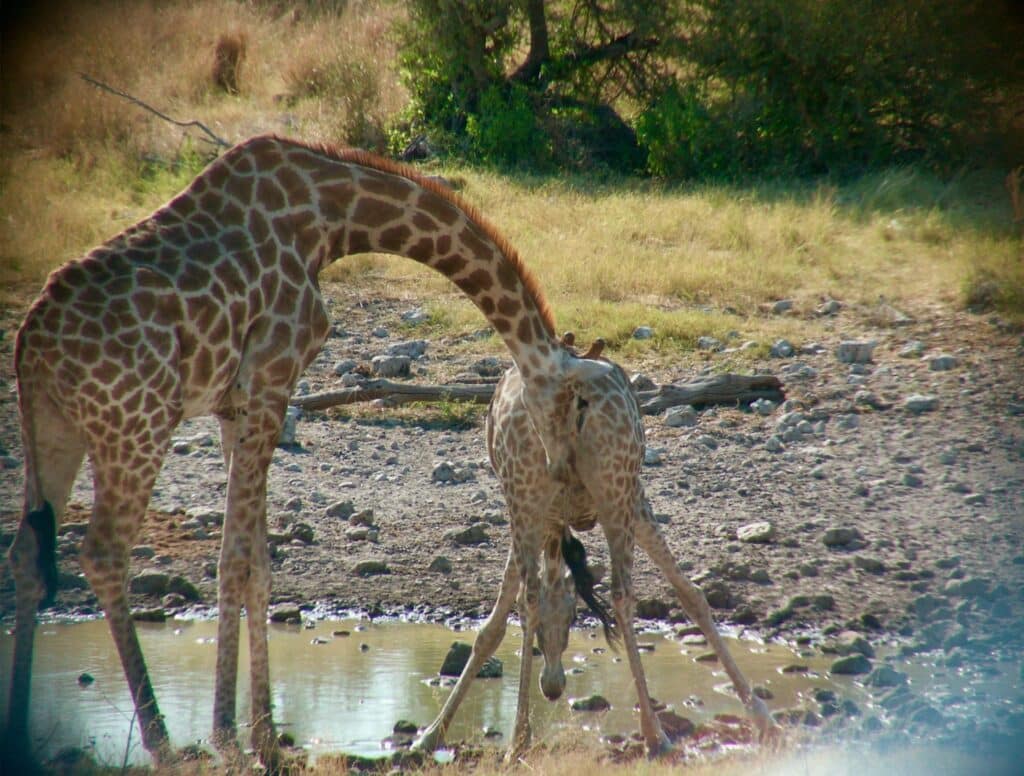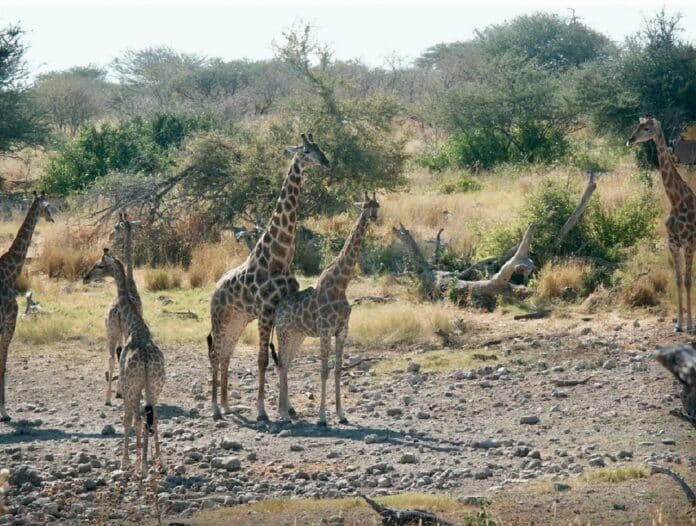Adult male giraffes are far larger than females; they also carry a sizable head and neck. Like cats and dogs, giraffes don’t experience heat cycles, have breeding seasons, make mating calls, or display physical signs that they are ready to mate. So, how do giraffes mate?
The simple answer is: pee, pheromones, and a gentle nudge, suggests a new study from the University of California, Davis. The study offers new insight into the unique sex life of giraffes, their reproductive behavior, and how their anatomy supports that behavior.
A male giraffe — called a bull, provokes the females to urinate by nudging them and sniffing their genitalia. If the female giraffe- cow- is interested, she widens her stance and pees for about 5 seconds.
The bull takes that urine in his mouth, curls his lip, and inhales with an open mouth. This act, called flehmen, transports the female’s scent and pheromones from the oral cavity to the vomeronasal organ (VNO).

Giraffes have papillae on their hard palate that each open to a nasopalatine duct that enters the vomeronasal organ (VNO), which is used for pheromone assessment. Unusually, giraffes were found to lack a prominent nasal connection to the VNO.
Although several animals, such as cats and horses, exhibit flehmen, most mammals only check pee once it has touched the ground. However, the giraffe is not designed for such investigations.
Lead author Lynette Hart, a UC Davis professor of population health and reproduction in the School of Veterinary Medicine, said, “They don’t risk going all the way to the ground because of the extreme development of their head and neck. So they have to nudge the female, effectively saying, ‘Please urinate now.’ And often, she will. He has to elicit her cooperation. If not, he’ll know there’s no future for him with her.”
Benjamin Hart, professor emeritus with the UC Davis School of Veterinary Medicine, said, “This is part of their reproductive behavior. This adds to our understanding of what giraffes do as they accumulate around a water hole. People love watching giraffes. I think the more the public understands about them, the more interested they’ll be in their conservation.”
The Harts were able to get especially close to dozens of giraffes gathered near water holes in the Namibia’s Etosha National Park.
Journal Reference:
- Lynette A. Hart, Benjamin L. Hart. Flehmen, Osteophagia, and Other Behaviors of Giraffes (Giraffa giraffa angolensis): Vomeronasal Organ Adaptation. Animals. DOI: 10.3390/ani13030354
